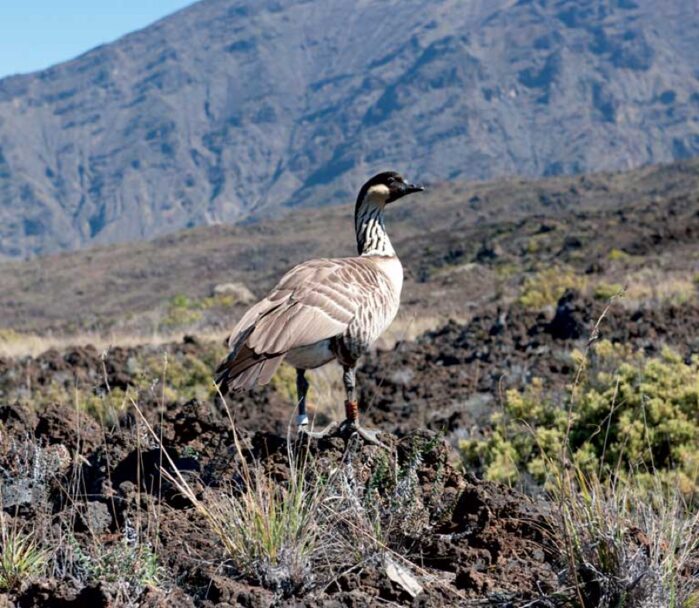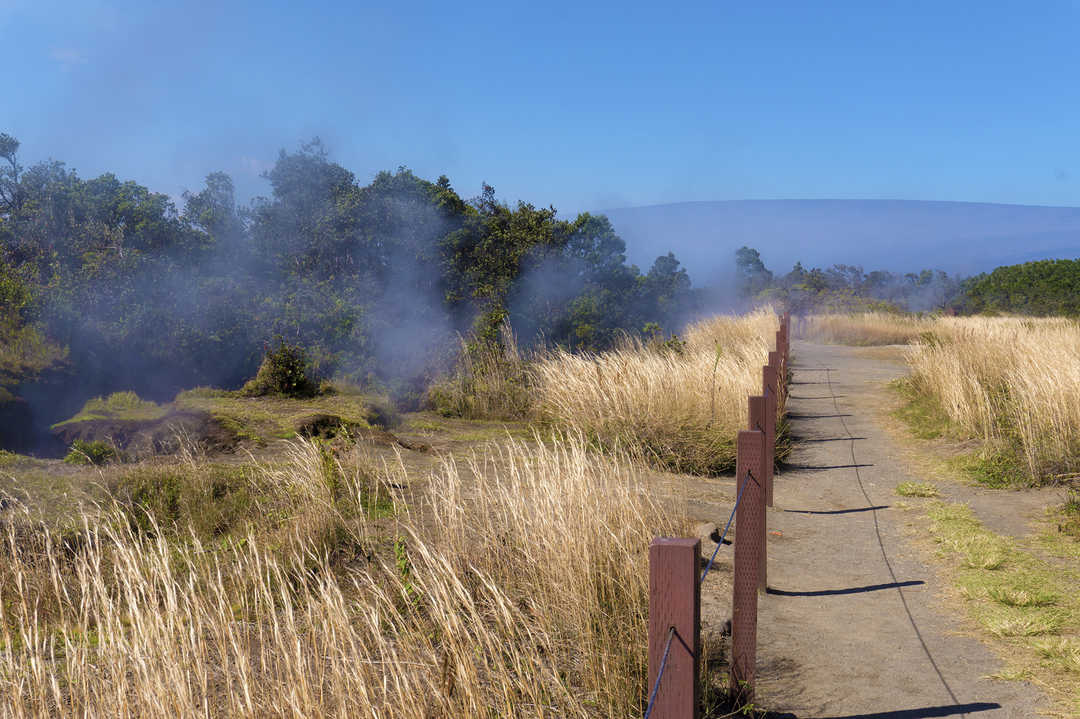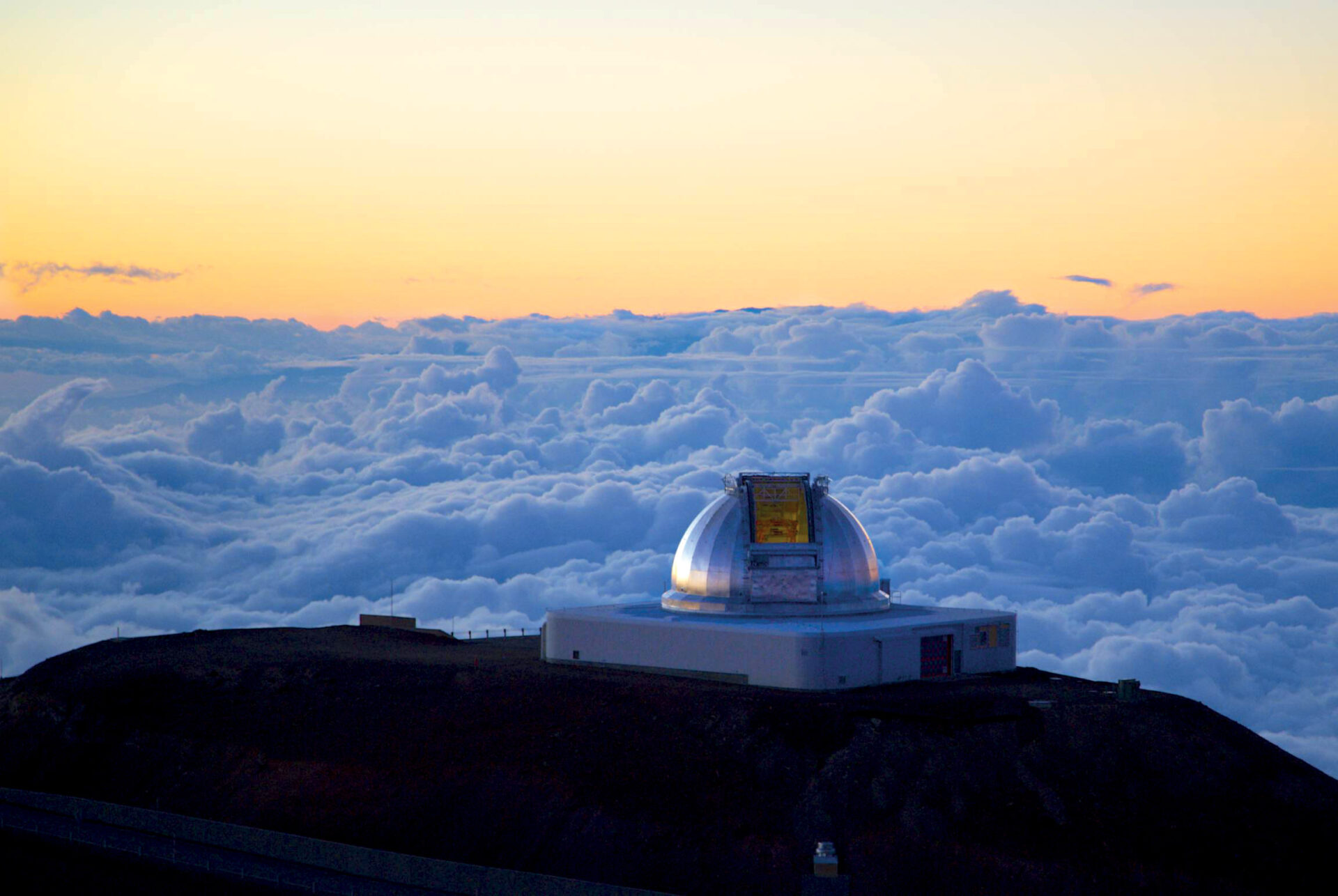The Hawaiian nene, also known as the Hawaiian goose, holds a special place in Hawaii’s rich biodiversity and cultural heritage. As Hawaii’s state bird, the nene symbolizes resilience and the delicate balance between nature and human impact. Despite being on the brink of extinction just a few decades ago, the nene has made a remarkable recovery.
What is the Nene?
The nene (pronounced “nay-nay”) is a species of goose found only in Hawaii. It is a close relative of the Canada goose, but has adapted to the unique environment of the Hawaiian Islands. Standing about 16 inches tall, with a wingspan of nearly 3 feet, the nene is known for its distinct appearance: a black head, buff-colored cheeks, and intricately patterned neck feathers resembling stripes.
Unlike most geese, the nene has partially webbed feet, which allow it to navigate the rugged volcanic terrain of the islands, including lava fields and grasslands. This adaptation is crucial, as the nene spends more time on land than in water, unlike its more aquatic relatives.

The Nene’s Journey to the Brink of Extinction
The nene’s story is one of both loss and resilience. Once numbering around 25,000 before Western contact, the population of the nene sharply declined due to habitat loss, hunting, and the introduction of predators like mongoose, rats, and cats. By the 1950s, the nene population had plummeted to fewer than 30 birds in the wild, making it one of the world’s rarest birds.
The introduction of these non-native predators posed a significant threat to the nene, as the bird had evolved in an environment with no natural predators. As a result, the nene became highly vulnerable, with ground-nesting habits leaving their eggs and chicks exposed.
Conservation Efforts: A Story of Success
Faced with the imminent extinction of the nene, conservationists and local communities took action. Captive breeding programs were established, and laws were enacted to protect the remaining populations. These efforts paid off, and today, the nene population has rebounded to approximately 3,500 birds, spread across the islands of Hawai’i, Maui, Kaua’i, and Oahu.
The nene’s comeback is one of the great success stories in wildlife conservation. Protected areas and ongoing management have allowed the population to stabilize, though challenges remain. Continued efforts focus on reducing predation, habitat restoration, and educating the public about the importance of protecting this unique bird.
The Nene’s Cultural Significance
In Hawaiian culture, the nene is more than just a bird; it is a symbol of family, unity, and perseverance. The nene’s strong familial bonds and the way it forages and travels in groups resonate with Hawaiian values of ‘ohana (family) and community.
Where to See the Nene in Hawaii
If you’re visiting Hawaii and want to catch a glimpse of the nene, several locations offer excellent viewing opportunities. On the Big Island, Hawaii Volcanoes National Park is a prime spot for observing the nene in its natural habitat. The bird is also commonly seen at Haleakalā National Park on Maui and Kīlauea Point National Wildlife Refuge on Kaua’i.
When encountering nene in the wild, it’s essential to respect their space. Though they may appear friendly and are often seen near roads and trails, they are still vulnerable. Feeding nene or approaching them too closely can disrupt their natural behavior and put them at risk.

Appreciating the Hawaiian Nene
The nene’s journey from near-extinction to a stable population is a testament to the power of conservation and the importance of preserving Hawaii’s natural heritage. As Hawaii’s state bird, the nene represents resilience, adaptation, and the enduring spirit of the islands. By continuing to protect and respect these remarkable birds, we help ensure that the nene will thrive for generations to come.
Next time you visit Hawaii, take a moment to appreciate the nene—a living symbol of the islands’ unique wildlife and cultural legacy.
Whether you’re looking to get into nature and learn more about your destination, or wanting to know the best options to relax by the resort pool and sip mai tais, Revealed Travel Guides can help. We live the experiences you read about and give our honest opinions on them—without taking any kickbacks or advertiser money. Consider it travel uninfluenced. Whether you’re looking for a guidebook to Hawaii or a GPS-aware drive tour to the National Parks and beyond, my believable guides can bring you unbelievable vacations.

Land Tours

Hawaii Forest and Trail: Mauna Kea Summit and Stars
If you want a a luxurious option for stargazing on Mauna Kea without the hassle of driving, consider Hawai‘i Forest & Trail. They offer a 7.5-hour tour plus a catered dinner at a historic sheep-shearing station, a sunset visit to the summit, and stargazing with their telescope at the visitor center, complete with hot chocolate and cookies.



0 Comments